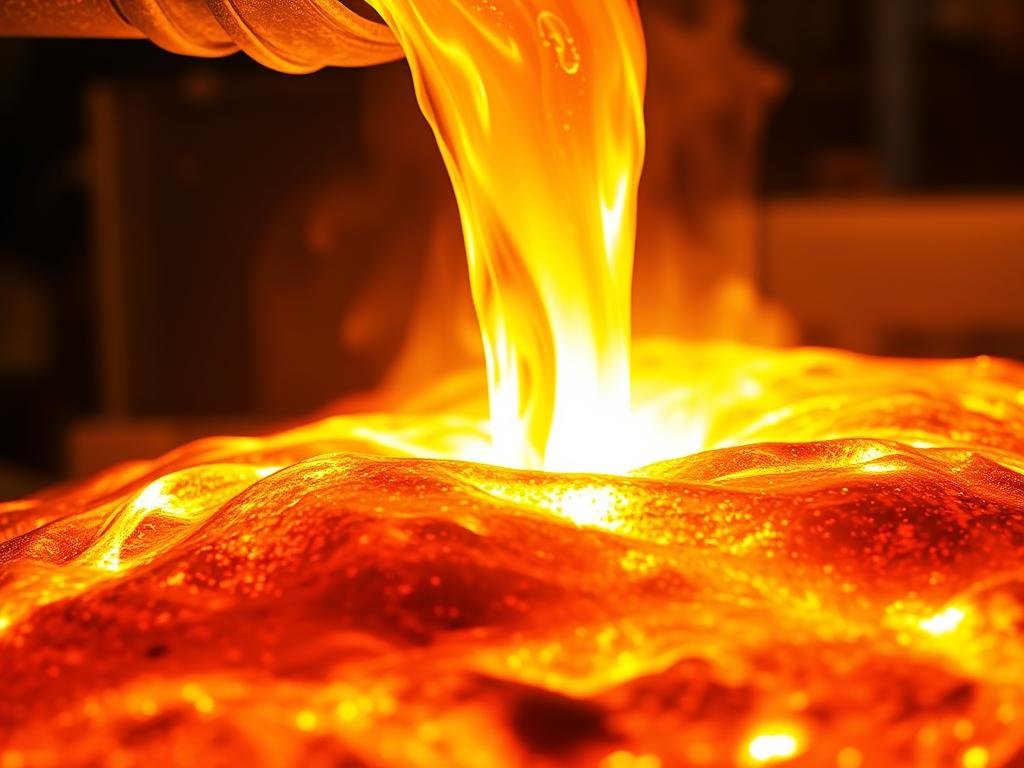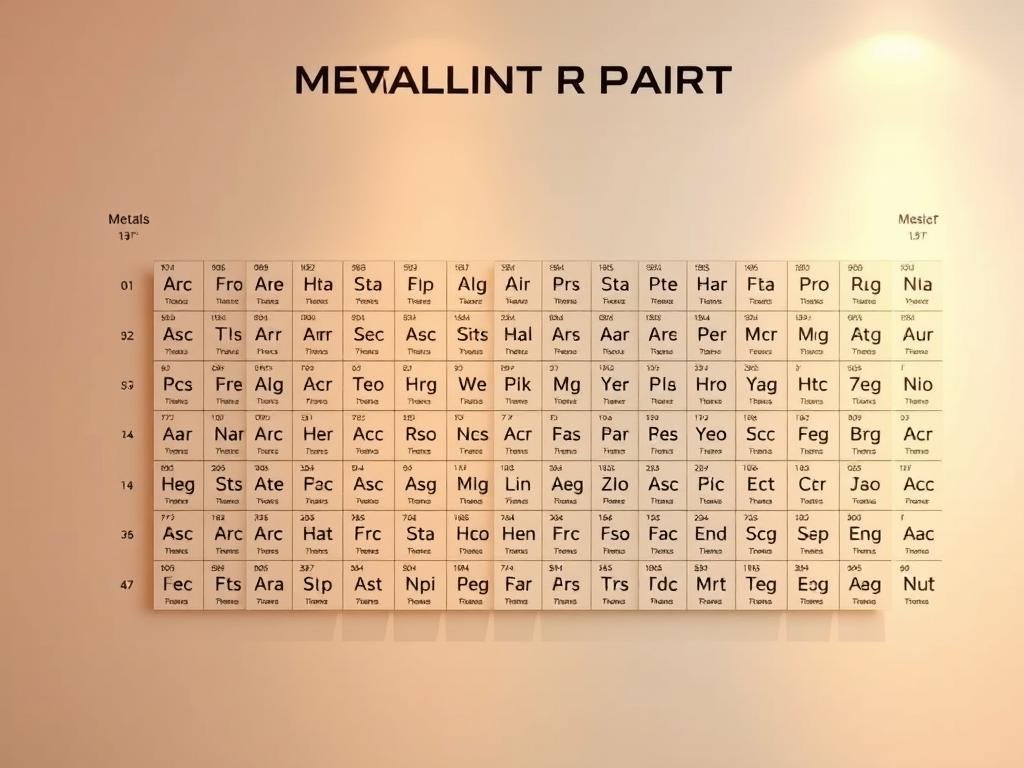The temperature at which a metal transitions from a solid to a liquid is crucial in various engineering applications. Understanding the melting behavior of metals is essential for selecting the right materials for specific temperature environments.
This comprehensive guide explores the melting points of various metals, their significance in engineering, and the scientific principles behind metal phase changes. By examining the thermal properties of metals, engineers can prevent component failure and optimize manufacturing processes.
Professionals in metallurgy, manufacturing, and aerospace industries rely on this knowledge to make informed decisions. A detailed melting point chart of common metals categorized by temperature ranges will be provided, serving as a valuable resource for engineers and researchers alike.
Understanding Metal Melting Points
The concept of melting points is crucial in understanding the properties of metals. At its core, the melting point represents the temperature at which a metal transitions from a solid to a liquid state.
What Is a Melting Point?
The melting point is the temperature at which a metal begins to transform from a solid phase into a liquid phase. At this temperature, the solid and liquid phases of the metal coexist in equilibrium. As noted by a renowned metallurgist, “The melting point is a critical property that determines the usability of a metal in various applications.”
The Science Behind Metal Phase Changes
When a metal reaches its melting point, the atomic bonds begin to weaken and break, allowing the metal to change its state from solid to liquid. This process involves the concept of latent heat of fusion, which is the energy required to convert a solid metal to liquid without changing its temperature. Understanding this phase change is essential for optimizing manufacturing processes and preventing component failure in high-temperature environments.
As metals transition from solid to liquid, their crystalline structure plays a significant role in determining their melting behavior. Different metal lattices respond uniquely to heat, influencing their melting points.
Why Melting Points of Metals Matter in Engineering
Understanding the melting points of metals is crucial for various engineering applications. The melting point of a metal is a critical property that determines its suitability for different uses, especially in high-temperature environments.
Preventing Component Failure
One of the primary reasons melting points matter is to prevent component failure. When metals are exposed to temperatures near their melting points, they can lose their structural integrity, leading to potential failures. For instance, in aerospace engineering, components are often subjected to extreme temperatures, making the selection of metals with appropriate melting points vital.

Optimizing Manufacturing Processes
Knowledge of metal melting points is also essential for optimizing manufacturing processes such as casting, welding, and forging. For example, the equipment used for casting must have a higher melting point than the metal being cast to prevent it from deforming or failing during the process.
| Metal | Melting Point (°C) | Common Applications |
|---|---|---|
| Aluminum | 660.32 | Aerospace, Automotive |
| Copper | 1085 | Electrical Wiring, Plumbing |
| Tungsten | 3422 | High-Temperature Furnaces, Light Bulb Filaments |
As highlighted by a study on metal failures, “The selection of materials with appropriate melting points is critical for ensuring the reliability and safety of engineering components” (
This is a critical consideration in engineering design, where the margin between operating temperature and melting point can be a key factor in component longevity.
).
Factors Affecting Metal Melting Points
Understanding the factors that affect metal melting points is crucial in engineering. The melting behavior of metals is influenced by their atomic structure and bond strength.
Atomic Structure and Bond Strength
The atomic arrangement and electron configuration of a metal determine its melting point. Metals with more delocalized electrons and closely packed atoms have stronger bonds, requiring more energy to break and resulting in higher melting points.
Impurities and Alloying Elements
Impurities and alloying elements can significantly alter a metal’s melting behavior. These elements can either raise or lower the temperature at which a metal transitions from solid to liquid.
Pressure and Particle Size
External factors like pressure and the size of metal particles also influence melting behavior. In specialized industrial applications, changes in pressure can modify melting points, while metal powders and nanoparticles often exhibit different melting properties than bulk materials.
Complete Melting Point Chart of Common Metals
The melting point chart of common metals serves as a valuable resource for various industrial applications. Metals are typically categorized into three groups based on their melting points: low, medium, and high.
Low Melting Point Metals
Low melting point metals have melting points below 500°C. These include gallium (29.8°C), mercury (-38.83°C), indium (156.6°C), tin (231.9°C), bismuth (271.3°C), lead (327.5°C), and selenium (217°C). These metals are often used in applications where low melting points are advantageous, such as in soldering and fusible alloys.
Medium Melting Point Metals
Medium melting point metals range from 500°C to 1500°C. Examples include aluminum (660°C), brass (930°C), copper (1084°C), gold (1063°C), silver (961°C), and cast iron (1204°C). These metals are commonly used in a wide range of applications, including construction, electrical wiring, and jewelry.
High Melting Point Metals
High melting point metals have melting points above 1500°C. Notable examples are steel (2500°F/1371°C), stainless steel (2750°F/1510°C), nickel (2646°F/1452°C), titanium (1668°C), platinum (1772°C), molybdenum (2623°C), tungsten (3422°C), and rhenium (3186°C). These metals are used in high-temperature applications, such as in aerospace and high-temperature furnaces.
| Metal | Melting Point (°C) | Category |
|---|---|---|
| Gallium | 29.8 | Low |
| Mercury | -38.83 | Low |
| Aluminum | 660 | Medium |
| Copper | 1084 | Medium |
| Tungsten | 3422 | High |
| Molybdenum | 2623 | High |

Understanding the melting points of these metals is crucial for engineers and manufacturers to select the appropriate materials for their specific applications, ensuring the reliability and efficiency of their products.
Engineering Applications Based on Melting Points
The knowledge of melting points is essential for engineers to design and develop components that meet specific performance criteria. Metals with high melting points are particularly valuable in industries that require heat resistance, such as aerospace and electrical engineering.
High-Temperature Industrial Applications
High melting point metals are used to manufacture parts that can withstand extremely high temperatures, such as turbine blades, electrical contacts, furnace components, and rocket nozzles. These metals maintain their structural integrity near their melting points, making them ideal for applications where heat resistance is crucial.

Casting and Welding Considerations
The melting point of a metal significantly influences its casting process. Metals with lower melting points are generally easier to cast, as they require less energy to melt. However, the choice of metal for casting also depends on other factors such as the desired mechanical properties of the final product.
Welding procedures are also affected by the melting point of metals. Understanding the melting behavior is crucial for selecting the appropriate welding technique and parameters to ensure strong, reliable joints.
Electrical and Electronics Uses
In electrical and electronics applications, metals with specific melting characteristics are used for soldering, circuit protection, and heat dissipation. For instance, solders with low melting points are used to connect electronic components without damaging them.
By understanding and leveraging the melting points of metals, engineers can optimize component performance for a wide range of applications, from high-temperature industrial uses to electrical and electronics applications.
Thermal Properties Related to Melting Points
The thermal properties of metals are intricately linked to their melting points, influencing their behavior under various temperature conditions. This relationship is crucial for engineers to understand when selecting materials for different applications.
Thermal Conductivity
Thermal conductivity is a measure of how efficiently a metal can conduct heat. Metals with high thermal conductivity, such as copper, are often used in applications requiring efficient heat transfer, like heat exchangers. The correlation between melting point and thermal conductivity is significant because metals with higher melting points tend to have higher thermal conductivity, although this isn’t a hard and fast rule.
- Metals like silver and copper have high thermal conductivity and are used in electrical applications.
- High melting point metals tend to have better thermal conductivity.
Thermal Expansion
Thermal expansion refers to how metals change dimensions when exposed to temperature changes. Understanding thermal expansion is vital for engineering applications where precise dimensions are required across varying temperatures. Metals with different melting points exhibit different expansion rates, making this property critical in designing components that must fit together over a range of temperatures.
Heat Resistance
Heat resistance is related to a metal’s ability to maintain its properties at high temperatures. While a high melting point often indicates good heat resistance, it’s not the only factor. Other properties, such as the metal’s crystal structure and the presence of alloying elements, also play significant roles.
- High melting point metals are not always superior in all high-temperature applications.
- Understanding the relationship between melting point and heat resistance is crucial for material selection.
In conclusion, the thermal properties of metals, including thermal conductivity, thermal expansion, and heat resistance, are closely related to their melting points. Understanding these relationships is essential for comprehensive engineering design and material selection.
Conclusion
The significance of melting points in metals cannot be overstated, as it directly impacts their application in various industries. Understanding melting points is crucial for engineers to select the right metal for specific applications, ensuring optimal performance and preventing component failure. From low-temperature soldering to high-temperature aerospace components, the melting point of a metal influences its behavior and suitability.
As alloy development continues to evolve, the range of available melting points is likely to expand, offering new opportunities for engineering applications.
